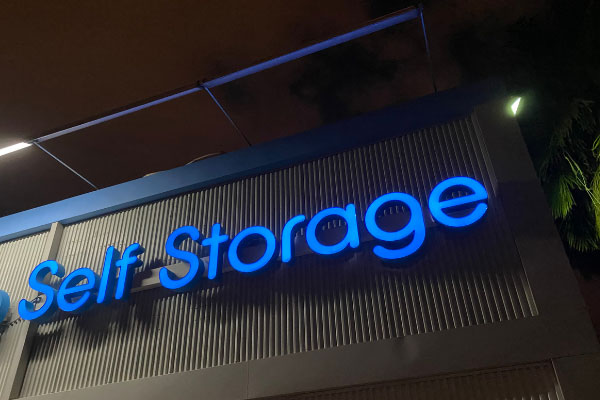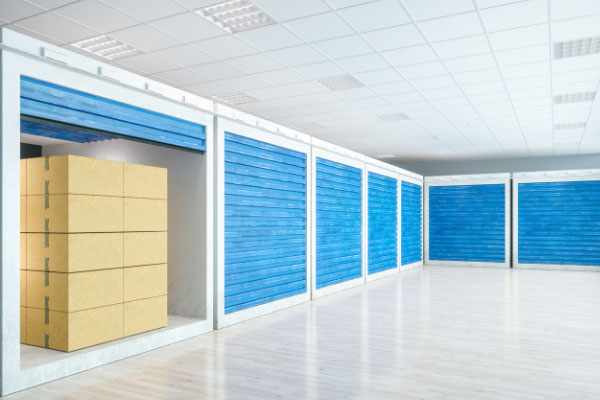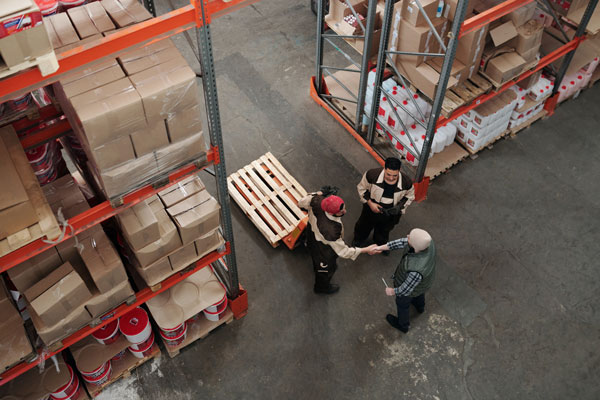What are the business opportunities today? The COVID-19 pandemic has caused not just a public health crisis but an economic crisis as well. But it created an enormous amount of demand for the self-storage industry. Cory Sylvester of DXD Capital shares how the pandemic takes part in the law of supply and demand for self-storages. He is currently managing and building facilities that will be available in 2022. Listen and discover how he started and succeeded in the self-storage industry by utilizing data technology unprecedentedly and efficiently.
—
Watch the episode here:
Listen to the podcast here:
The Demand And Business Opportunities In Self-Storage With Cory Sylvester
Cory Sylvester with DXD Capital, welcome to the show.
Thank you, sir. Thanks for having me.
The pleasure is mine. The same three questions I ask every guest who comes on the show are, can you quickly tell us where you start? Where are you now? How did you get there?
I started JP Morgan back when I graduated from college, originally doing credit underwriting, then I got into picking stocks. I started a company called Union Realtime with a couple of other fellows a few years ago that developed into a company called Radius Plus, which is a self-storage and data analytics platform that the industry uses now. From that, I was exposed to how development works, why it’s so attractive, the industry itself. I started DXD Capital with a couple of other partners. We are building 14 facilities in our pipeline right now and 300 construction. That’s a quick synopsis.
Let’s back up here a little bit about Radius Plus. That’s not a platform or a technology I’m familiar with. What is that?
Radius Plus is a website that you can go to if you’re a self-storage operator, developer, and acquirer. The package that we’ve created is we were the first and only group to figure out where every self-storage facility is, exactly how big it is, tracking all the rates, where all the new developments are occurring. It’s basically just a platform that allows somebody to come with a location or an existing facility and educate themselves about what does the current supply looks like? What does the pipeline of new supply look like? What are the rates and history of rates been? It allows them to educate themselves on everything that’s happening in and around that area. That was the first foray into storage.
What gave you the idea that said, “This is missing in the market, particularly in the storage market,” to launch and build that?
It’s a weird story. When we started Union Realtime, we were taking our buy-side skills of investment analysis and trying to combine that with a technology platform to consolidate the data needed to make investment decisions. The first industry that I looked at in that endeavor was self-storage. Someone said, “You should take a look at this industry. It looks to be like there’s a lot of development occurring.” This was in 2015.
If we look at the last three or four recessions, storage has just crushed it through all of them.
The genesis was we were researching the self-storage industry. The public saw there was a ton of development occurring that the stocks were not pricing any. That set itself up as a short cyclical thesis. That was the original idea as we went to hedge funds and said, “The self-storage industry is at a cyclical peak.” The earnings estimates don’t integrate that into forward-looking numbers, so there’s a short opportunity here.
We originally got into self-storage by saying, “You should short the stocks.” It’s the process in which we are undertaking to do the analysis. We knew that there were, for instance, 4 million square feet in Denver, but we didn’t have a high degree of conviction around what’s the installed base number. As we did the research, we realized no one had ever figured out where every facility is and how big it is exactly.
Through that process, we discovered this data set doesn’t exist, and learning more about the industry and how the developers’ function, we saw that there was an opportunity. We have the technical expertise to figure out where every facility is. Let’s do and integrate that into a platform, completely shift gears and create an analytics platform for the self-storage industry itself. It’s an, “I never thought I’d be here,” type of dynamic, but that’s how we got into self-storage.
The iterative process of being an entrepreneur, it’s like, “I don’t know how did we get here? No clue,” but this is hilarious. A few years ago, you guys said, “Not only are we going to run an analytics platform because you now see opportunity, but how did that shift happen?” I would think if in 2015 you discovered that there’s a great opportunity because you think that the stock prices of self-storage companies are going down and now you’re building fourteen facilities. That seems counterintuitive.
The short thesis ended up working. If you look at where stocks peaked in 2016, they peaked at the beta at which they fell. I came from the semiconductor industry in terms of doing that analysis. If you had a 30% decline in rates in semiconductors, the stocks would go down 80%. The same dynamic we thought was in effect with self-storage and spot rates in some of these areas did decline 40%, 50%.
The internal dynamic of storage, though, buffered the industry from that same sort of decline. The stocks did decline, but the magnitude of that decline was not as much as we originally thought. If I have a self-storage facility, it’s 85% occupied. From that standpoint, I have existing tenants that I’m going to continue to raise rates up. They’re sticky and don’t want to move.
You have this dynamic where you have these in place that you continue to raise rents on while the churn makes you infilled new customers at much lower rates. The net impact to the bottom line has a much lower delta than we’re used to. That’s a long way of saying, like, “It’s a great business model.” Once I discovered and understood that a few years ago was when we started thinking about how can we take development to the next level?
That’s what Radius does. They come to the platform or the location. Let’s start with location. How do we reverse engineer that and figure out where the hotspots are? Where’s the opportunity to develop self-storage? Jonathan, who was with us at the Union Realtime, saw this all along as well. The process we thought could be shifted on its head.

A few years ago, we started creating that technology, and that’s where the idea for DXD came. It took me 2, 3 years to find the right team and to find people that are willing to take a chance on us. It’s a big endeavor to raise money and ask people to trust you when you have no track record. That’s how we got into it.
Now you’ve reverse engineered this. You have a front seat where the opportunities lie based on the data set you’ve created. You say, “We’re missing things here. Let’s go build there?”
Thinking about storage, the rates change like airline rates. Your rate is a function of supply and demand in real-time. If you were to look at Christmas Eve flights across the country and the price is high, you can indicate that there’s a lot of demand for that seat. Storage works in that same fashion where if you have a 10 X 10 rate that’s going from $260, generally speaking, that’s an indication of high demand relative to supply.
Using that premise as your guiding principle, you can figure out where there are mismatches between supply and demand. Self-storage being a three-mile market, give or take, you can have general markets that are oversupplied and still have areas within them that have the opportunity to add new supply. It’s a unique asset class from that standpoint. You are a micro-market. You need to analyze as such, the opportunities need to be looked at with a knife and not a broad brush.
When it comes to that pricing, and you’re saying that theoretically, they could move like airline prices, it takes a while to bring a new product online.
In some areas, it’s quicker than in others. Generally speaking, to build one is twelve months generally. To get CDs up and to run is 6 to 9 months, along with closing the land. It’s not a quick process by any means. We have entitlements for a couple of our projects that are run for two years. Before we even close on a property, it could be eighteen months, another six months after that.
You build it twelve months after that. It can take 2, 3, 4 years, depending on how big the property is, where it’s located, and the density around it, to fill it up. That can be a 6, 7, 8-year process all together at the long end of it. I don’t expect supply to hit anytime soon, having already come through the bottom of that last cycle, but that’s the way the self-storage industry works. It ebbs and flows in those big movements because it does take time for a supply to turn in either direction.
In your opinion, we are under-supplied generally across the markets, or is it looking at it, like you said, they got a knife and not a broad paintbrush?
It’s a big endeavor to raise money and ask people to trust you when you have no track record.
Yeah. Generally speaking, from 2016 to 2020, you had deliveries that compound each other because it takes time for them to fill up. Deliveries in 2016, 2019 were still on the back end of getting filled up in some cases. You had this compounding effect of all the supply that had impacted the market. What happened with COVID was an enormous amount of demand was created.
From what we can tell at this time was structural demand. Basically, the way it worked is June 1st, 2020, you had, for the most part, the harshest of lockdown restrictions ended. That was the starting point of when the prices started increasing and haven’t stopped since normally you see seasonality and prices decline in the winter.
In the winter of 2020, you saw prices continue to go up, and that’s because people are moving. They’re moving from the city to the suburbs. They needed a spare bedroom at home and to put their stuff somewhere for an office. One of the great things about storage, there are so many different reasons why people will use it, but there’s no one reason I can point to other than a general pandemic change of lifestyle created enormous demand.
If you can think about the 2016 to 2020 supply that was created, a lot of that was absorbed. From that standpoint, now we’re in a position where prices are up a lot. Supply has been absorbed, and we’re off to the next full cycle on self-storage. In terms of when you want to be delivering a new product to the market, again, this is a high-level macro comment and some areas you still don’t want to deliver a product to, and you have to know where those are, but this is the beginning of the next cycle.
You hear all sorts of things in regards to storage being a recession-resistant asset and things like that. Do you think that the bull cycle could change if we do have a recession? Will it pull back? How would that affect it?
If we look at the last 3 or 4 recessions, storage has crushed it through all of them, and that goes back to the core principle. The demand drivers for self-storage are so diverse. If employment goes down, that means income gets hit, and there are adverse effects to tenants that may have been impacted there. To the same extent, you have people that get foreclosed on.
They move out of their house into a smaller apartment, whatever it is that does create demand that partially offsets it. Nothing is recession-proof. If I use public storage as a proxy, I think there are only six quarters in the great recession. It was revenue growth in NOI, regardless. Their top-line numbers only declined for six quarters, and then they were off to the races again. It’s proven itself to be very recession-resistant. That’s just a function of diverse demand.
As a developer, what’s your long-term plan, develop it and hold it? Are you going to sell it off to the bigger players in this space once you have them built?
The first one that we raised is a $50 million closed in funds. We technically have to give our investors their money back. My personal goal is to continue to keep as much of my equity in everything that I do in self-storage for as long as I can. It comes back to the business model of it being a phenomenal asset class. We are finding the best locations in the country.

When it takes 10 to 15 years to stabilize an asset truly, why would I sell that asset if I don’t have to and would rather continue to ride that asset and gather it into a larger portfolio? The portfolio premium does exist. There will be an exit, I assume, at some point. I don’t know what that looks like, but we might as well keep the best locations we’re finding across the country for as long as possible.
Raising a $50 million fund, I know you mentioned early on that it was challenging out of the gate to find people willing to take a chance on giving a group of people money that don’t have a track record. What was that like? How did you overcome that?
We had a group of great investors that came in for our first close. We hit the road on August 1st, 2020. The only real benefit was that everyone was at home, and no one had anything to do. We got meetings with everybody that took our call, so that was great. The team we did put together, and the trust had already been established through a lot of those investors with my partner, Drew Dolan, created a path for us to be able to get that capital raise.
We have a differentiated platform on the tech side, the experience, and the trust. It was the trifecta that allowed us to be successful. Originally COVID was this dark cloud over what we were trying to do. We didn’t know how we were going to get our deals financed in the summer of 2020. It turned out that didn’t matter because by the time we needed that, it was very much available.
It was a unique dynamic of having a lot of trust with some great people and a differentiated platform that we happen to be stepping into. It’s one of the biggest tailwinds that the industry has ever seen. This is the biggest bull market for self-storage we’ve ever seen. Hands down, there’s no comparison. The industry does cycle. There have been other bull markets, obviously, but you’ve never seen inflection in demand like we’ve seen. That takes a lot of credit as well. It was a lot easier to sell people with the idea that this is the best performing asset class, and it continues to get better throughout the race. We had a lot of tailwinds in our back as well.
Why did you guys decide to do development versus finding existing assets or portfolios of assets and implement some value-add strategy on those?
The main reason was it was where we had the ability to create the most value. There are rounded 50,000 self-storage facilities in the country. Now trying to buy existing self-storage facilities is a very hot business. Even if you know, which 2,000 are the best self-storage facilities, you’re going to be competing with other people that happened to fall on them and are bidding against them.
Our competitive advantage, while we can definitely have a competitive advantage from a tech standpoint, the order of magnitude on the development side, to know what parcel of dirt we should be purchasing, and to build a self-storage asset, the opportunity there is much greater. It’s much more difficult to know where that parcel exists versus one out of the 50,000 that is already operating in existing and has created a lot of value.
In the storage business, the rates change like airline rates. Your rate is a function of supply and demand in real-time.
It was the biggest value creation we thought we could bring out of the gate, the spreads between what you could develop and where cap rates are enormous if you find the right dirt. The prerequisite is that you have to have the right team that knows the entitlement process, the construction process, and luckily, that’s what we did.
One other question on the build side, I know you said this earlier. You might find that in a three-mile radius that 10 X 10 units are rented for $250. Is that a sign to you that says, “We should go in and build more 10 X 10 units?”
That’s a function of what that price is relative to the other side of this. You want to take a 10 X 10 and convert it to a price per square foot. A 10 X 10 is 100-square feet. If the price is $250 a square foot, generally speaking, the smaller units go for a higher dollar per square foot. We found it in one of our markets that the 10 X 15s had a higher price per square foot relative to the 10 X 10s. In that case, that’s the indication that gives us the signal that we should be altering the unit mix when we are at that decision phase towards maybe 10 X 15s.
There’s market research that goes into that. We visited every facility in our trade area and had discussions with the managers, who have a great insight into the long-term history of what people use in this area. One area could be very different from another. There’s not a lot of people using 10 X 15s in Manhattan, a lot of 5 X 5s, 4 X 5s. It’s a small unit. Every area is unique, but you want to think about what you’re building, not just on an absolute basis, but what’s the price relative to the other units. That’s going to give you a good indication of what supply and demand are for that unit in that market.
Do you guys have any facilities live right now, or is everything still under construction?
It’s under construction. I’m waiting, watching the clock. I can’t finish soon enough, but right now, we have a handful that is under construction. We’ll be completed here in 2022.
I think I saw on your website that you’re building some very large facilities. That’s a lot of fun. I look forward to seeing those come online and see where you guys take this business. It looks like you get the right pieces and the right players in place. We’ll keep our eyes peeled and ears tuned in to what you guys are doing. This has been a blast, Cory. Thanks for coming on. I’ve got a few questions to wrap up the show here. If you could help our readers avoid one mistake in real estate, what would it be, and how would you avoid it?
It’s all along the due diligence path. I think what we’ve found from our perspective is making sure that you understand where your utilities are. Sometimes they’re not marked correctly on the survey. Call and verify your utilities before you take the title for face value. That would probably be the biggest thing I do at this point. I’ll preface that and say my actual dirt experience is limited at this point to this fund. I don’t have a long history there, but that’s definitely one lesson I would pass along.

It sounds like one that maybe you potentially have learned the hard way already. I appreciate that. That’s what I’m writing down. Next question for you, when it comes to investing in the world, what’s one thing you’re doing right now to make the world a better place?
I’m investing in getting my kids involved in jujitsu so that they’re humble, respectful, and good kids.
There’s no higher calling than being a good parent. Cory, if our readers want to get in touch with you or with DXD, what is the best way to do that?
Email me, Cory@DXD.Capital, or come to our website, DXD.Capital. There are ways to get in touch with us there.
Cory, thanks so much for your time. I do appreciate it.
Thanks.
Important Links:
About Cory Sylvester
 Cory leads the site selection, investment committee, and technology achitecture. He is a founding Principal of Radius+ and is responsible for overseeing the date validation efforts for all of Radius+’s core datasets. Prior to Radius+, he spent 6 years investing in technology companies at Columbus Circle Investors and J.P. Morgan Asset Management. He started his career at J.P. Morgan’s Investments Bank in 2006 after graduating with a BA in Economics from Skidmore College.
Cory leads the site selection, investment committee, and technology achitecture. He is a founding Principal of Radius+ and is responsible for overseeing the date validation efforts for all of Radius+’s core datasets. Prior to Radius+, he spent 6 years investing in technology companies at Columbus Circle Investors and J.P. Morgan Asset Management. He started his career at J.P. Morgan’s Investments Bank in 2006 after graduating with a BA in Economics from Skidmore College.

